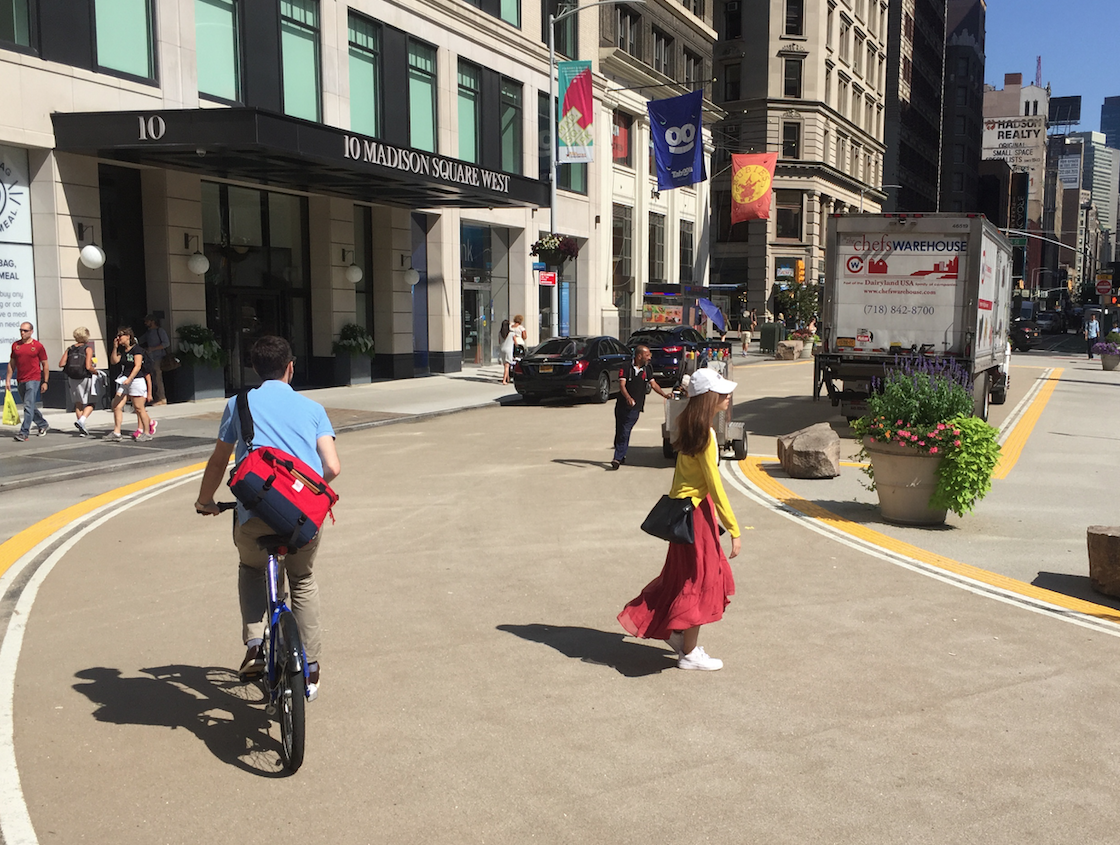A few years ago, NYC DOT tested out a new traffic calming concept: the neighborhood slow zone. The idea was to basically add a bunch of speed humps and low-cost traffic calming to improve safety neighborhood by neighborhood.
After the first slow zone came to the Claremont section of the Bronx in 2011, DOT opened up the process and made it an opt-in affair. Civic groups could apply to DOT for slow zones, as long as the streets met the agency's criteria. (Mostly, clusters of contiguous residential streets were eligible.) More than 100 groups across the city responded.
The slow zone program was a standing offer to neighborhood groups from DOT: Here's a way to make your streets safer -- tell us that you want it and we'll make it happen. The same basic structure could be used to expand DOT's "shared space" initiative.
The recently-installed shared space on Broadway between 24th and 25th streets is a new type of pedestrian-priority street for DOT. People on foot can use the whole width of the street -- there's no such thing as jaywalking on this block. Cars have access, but it's not a through street and drivers are supposed to stay below 5 mph.
The city plans to make a block of 43rd Street near Grand Central Terminal its next "shared street," and is conducting a shared space pilot on Mott Street in Chinatown for the first three Friday evenings of this month. Past that, however, there aren't any plans to bring the treatment elsewhere.
That's too bad, because the shared space concept could be applied in residential contexts too. In a city where summer play streets are a vanishing tradition, "shared space" blocks could give kids permanent places to play. Many New Yorkers would welcome a low-car, pedestrian-priority zone on their block. Most residents don't own cars, after all.
On a typical residential block, this would require eliminating free on-street parking, and DOT is usually skittish about parking removal. But what if the residents of that block agreed the car storage is less important than having access to the whole street as a public space?
This is where the slow zone model of opting for change comes in. It would take some work to figure out the mechanics, which would be more localized than the neighborhood-scale slow zone process, but the basic idea is the same. A critical mass of residents on a block want it to become a shared space, DOT checks to see if the block meets its technical criteria, and if everything is in order, the share space can proceed.
If you and your neighbors want to live on a block where people take precedence over cars, there should be a way to make that happen.





